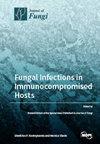利用奥卡拉和大豆乳清作为具有成本效益的底物,探索米曲霉生产可持续菌体蛋白的潜力
IF 4.2
2区 生物学
Q2 MICROBIOLOGY
引用次数: 0
摘要
菌体蛋白是一种通过真菌发酵生产的替代蛋白质。然而,它通常依赖于从淀粉中提取的精制葡萄糖浆,这可能成本高昂且不可持续。本研究调查了大豆加工副产品(黄豆和大豆乳清)作为替代底物的潜力,以便利用黑曲霉生产菌体蛋白。在搅拌(100 转/分)或不搅拌(100 转/分)的情况下,在 30 °C、稀释的黄卡拉(1:50)和大豆乳清(1:1)中培养米曲霉 7 天。大豆乳清产生的生物量更高(369.2-408.8 毫克干生物量/克干基质),但生物量浓度较低(0.783-0.867 克干重/升)。相反,黄秋葵产生的生物量浓度较高(2.02 克干重/升),产量为 114.7 毫克干生物量/克干基质。然而,只有在静态条件下才能观察到黄卡拉生物质的形成,因为搅拌会导致生物质与大豆浆缠绕在一起,影响其产量。此外,黄秋葵倾向于将蛋白质释放到培养基中,而大豆乳清则在生物质中积累蛋白质,蛋白质含量高达 53%(重量比)。这项研究的结果为减少大豆加工废弃物和解决食品安全问题提供了一种可行的方法。本文章由计算机程序翻译,如有差异,请以英文原文为准。
Exploring the Potential of Aspergillus oryzae for Sustainable Mycoprotein Production Using Okara and Soy Whey as Cost-Effective Substrates
Mycoprotein is an alternative protein produced through fungal fermentation. However, it typically relies on refined glucose syrup derived from starch, which can be costly and unsustainable. This study investigates the potential of soybean processing by-products (okara and soy whey) as alternative substrates for producing mycoprotein using Aspergillus oryzae. A. oryzae was cultured for 7 days at 30 °C in diluted okara (1:50) and soy whey (1:1) with or without agitation (100 rpm). Soy whey produced higher biomass yields (369.2–408.8 mg dry biomass/g dry substrate), but had a lower biomass concentration (0.783–0.867 g dry weight/L). Conversely, okara produced a higher biomass concentration (2.02 g dry weight/L) with a yield of 114.7 mg dry biomass/g dry substrate. However, biomass formation in okara was only observed in static conditions, as agitation caused biomass to entangle with soy pulp, hampering its production. Additionally, okara tended to release protein into the media, while soy whey accumulated protein within the biomass, reaching up to 53% w/w protein content. The results of this study provide a promising approach to addressing both soybean processing waste reduction and food security concerns.
求助全文
通过发布文献求助,成功后即可免费获取论文全文。
去求助
来源期刊

Journal of Fungi
Medicine-Microbiology (medical)
CiteScore
6.70
自引率
14.90%
发文量
1151
审稿时长
11 weeks
期刊介绍:
Journal of Fungi (ISSN 2309-608X) is an international, peer-reviewed scientific open access journal that provides an advanced forum for studies related to pathogenic fungi, fungal biology, and all other aspects of fungal research. The journal publishes reviews, regular research papers, and communications in quarterly issues. Our aim is to encourage scientists to publish their experimental and theoretical results in as much detail as possible. Therefore, there is no restriction on paper length. Full experimental details must be provided so that the results can be reproduced.
 求助内容:
求助内容: 应助结果提醒方式:
应助结果提醒方式:


